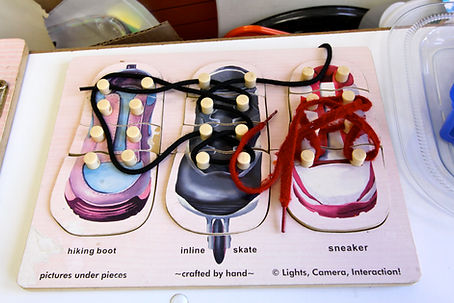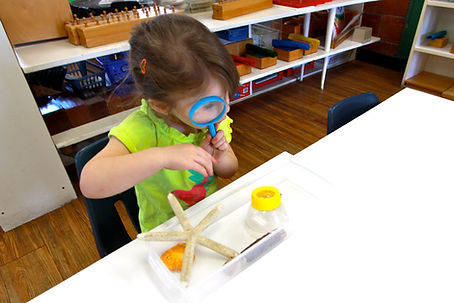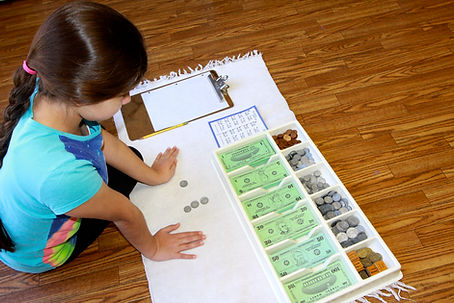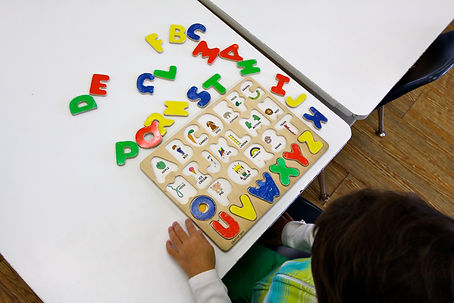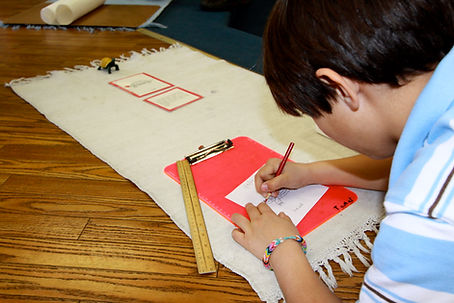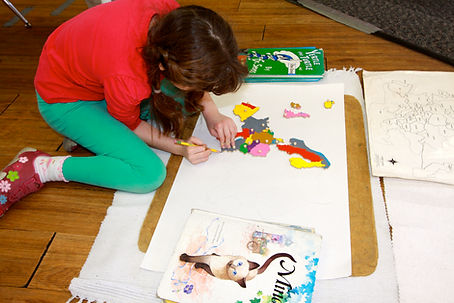A Montessori classroom is divided by low, open shelves into several curriculum areas – Practical Life, Sensorial, Language, Math, Science, Geography and Cultural Studies, Music and Art. The curriculum is an integrated, thematic approach that ties individual disciplines together into the study of the physical universe, the world of nature, and the human experience – one lesson leading to many others.
Each classroom material isolates a specific concept or skill and has been designed to naturally draw children to work with it with little or no nudging from adults. The materials are used as tools to help children work and learn at their own pace, to see abstract ideas presented in a very concrete, three-dimensional way, and to help them grasp and understand the concepts they are working to master. Because the materials have been created, in many cases, to allow children to check their own work, Montessori students learn not to be afraid of making mistakes. We refer to this as a built-in “control of error.” Children learn that they can try again without fear of embarrassment.
Our curriculum is devised to preserve a lifelong love of learning, while building skills, self-esteem, competence, independence, and responsibility.
